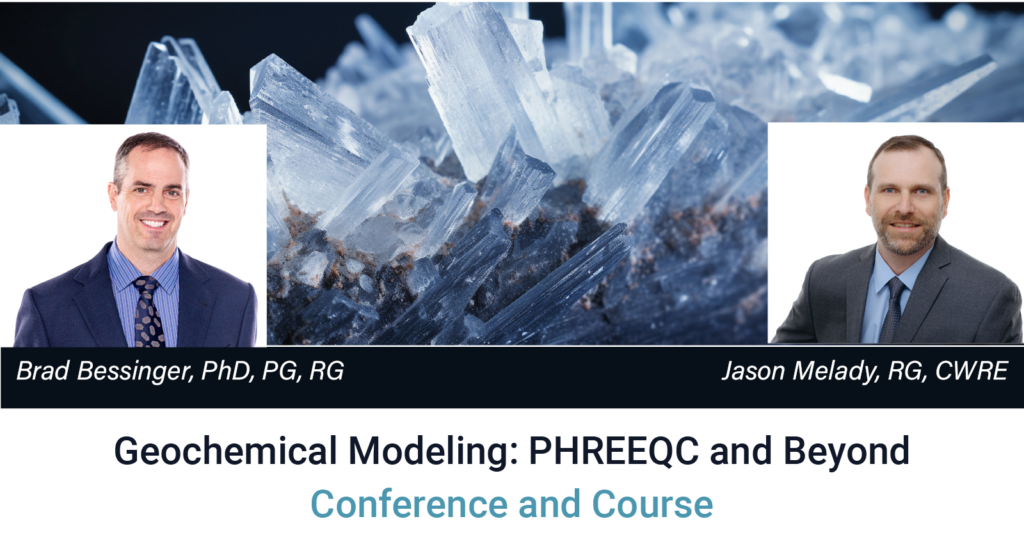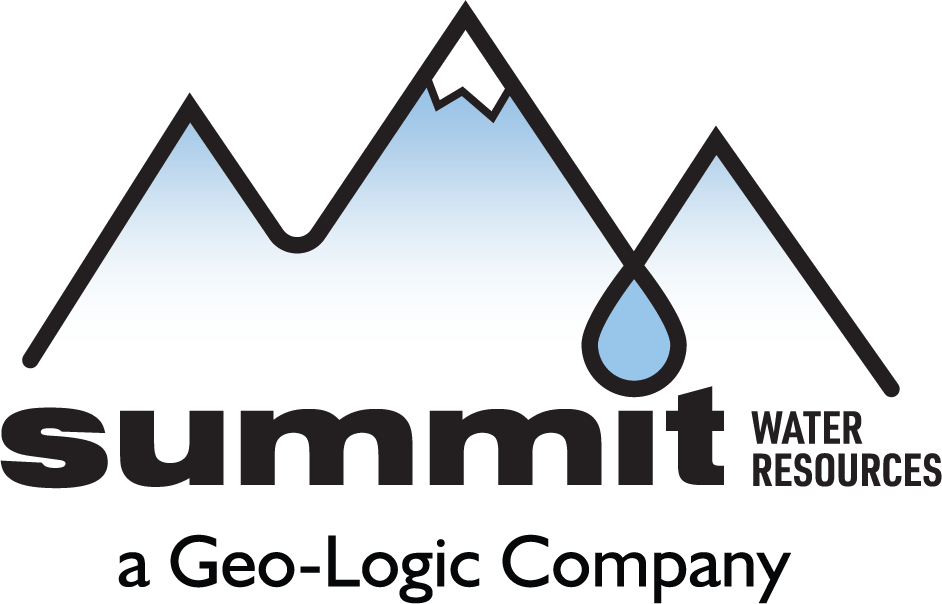
Principal Geochemists Brad Bessinger, PhD, RG of Summit Water Resources and Christopher Wolf, PG of Geo-Logic Associates affiliate Daniel B. Stephens & Associates, Inc. will be presenting at the Geochemical Modeling: PHREEQC and Beyond Conference and Short Course, taking place September 30 to October 4, 2024, in Rockville, Maryland. The event will focus on best practices and innovative projects using PHREEQC, a powerful reaction/transport modeling tool developed by the U.S. Geological Survey (USGS) and used by water agencies and consultants to perform aqueous geochemical calculations. Dr. Bessinger co-organized the inaugural event. C.A.J. Appelo and David Parkhurst, the founders of PHREEQC, are teaching a 2.5-day geochemical modeling short course. Presentation abstracts for Brad and Chris are below..
Development of a Thermodynamic Database to Simulate PFAS Adsorption in Aquifers
Brad Bessinger and co-author Jason Melady, Summit Water Resources
A thermodynamic database was developed to predict the fate and transport of per- and polyfluoroalkyl substances (PFAS) in groundwater using PHREEQC/PHAST. The database included adsorption of individual PFAS to organic matter, clays, and iron oxyhydroxides. Adsorption was simulated using a hybrid approach based on log KOC values for organics, empirical regression equations for clays, and a CD-MUSIC surface complexation model for iron oxyhydroxides. The database was tested against published adsorption studies on soils and was used as input for a reactive transport model (RTM) developed to simulate PFAS adsorption and desorption during aquifer storage and recovery (ASR). The RTM predicted that short-chained PFAS are primarily adsorbed by iron oxyhydroxides and clays, while long-chained PFAS are primarily adsorbed by organic matter. The quality of recovered water in a PFAS-containing aquifer should generally improve during ASR cycling through a process known as aquifer conditioning. The model predicted that the time required for water quality improvement depends on aquifer mineralogy, with higher organic content in sand and gravel aquifers compared to basalt requiring longer times. Finally, the model predicted that there is a potential for PFAS concentrations to exceed water quality criteria at the edge of the ASR injection bubble, depending on several factors including aquifer mineralogy.
Reactive Transport Modeling to Evaluate Monitored Natural Attenuation of Radium
Brad Bessinger, Summit Water Resources and co-author Frank Breen, Breen Geosciences
An evaluation was performed to assess monitored natural attenuation (MNA) as a remedy component for radium in groundwater at a former industrial facility. The technical approach was based on the EPA’s tiered guidance on MNA, which recommends geochemical characterization of soil and groundwater, as well as development of a reactive transport model (RTM) to synthesize data and predict long-term plume stability. Aquifer geochemistry and the speciation of uranium, thorium, and radium were determined through XRD, sequential extractions, and SEM/EDS. Also, leaching and adsorption rates were assessed through laboratory batch testing. Reactive transport modeling was performed with PHAST, and an important aspect of the modeling effort was supplementing the thermodynamic database to include surface complexation reactions between radionuclides and mineral adsorbents (such as humic acids, clays, and iron oxyhydroxides). Laboratory and modeling results demonstrated relatively high radium retardation rates, leading to a revision of the prevailing conceptual site model (CSM). The RTM predicted that elevated radium activities in offsite groundwater can be explained by competition for mineral adsorption sites by dissolved ions in the high total dissolved solids (TDS) groundwater plume, leading to the desorption of naturally occurring radium.
Using PHREEQC to Evaluate Geochemical Reactions for Carbon Dioxide Sequestration Projects
Christopher Wolf, PG, Daniel B. Stephens & Associates, Inc.
Carbon sequestration is a method for injecting carbon dioxide (CO2) into deep rock formations using deep wells to reduce CO2 emissions to the atmosphere. The U.S. Environmental Protection Agency (EPA) regulates these deep wells through the Underground Injection Control (UIC) Class VI program. The permitting process requires evaluation of the compatibility of the groundwater, rocks, and CO2, including use of the geochemical model PHREEQC to perform equilibrium speciation modeling “to obtain saturation indices to predict the potential for mineral dissolution or dissolution.” The modeling is intended to identify the major potential reactions that may affect CO2 injection or containment.
A series of PHREEQC models were run for a proposed site in California. The CO2 injection zone is within Miocene marine sedimentary rocks confined by shales. Model inputs included mineralogy, water chemistry, bulk density, porosity, pH, temperature, pressure, and injectate gas composition.
The injection zone is mostly quartz and feldspars, and the confining zone or sealing unit is composed of quartz and clay minerals including layered illite/smectite. Water chemistry is brackish with a total dissolved solids (TDS) concentration of 24,000 parts per million (ppm). A unique water sample was selected for the modeling that included major element composition and pH. Other parameters include a reservoir temperature of 99°C with initial and final pressures of about 20 and 200 atmospheres. Injectate composition was 99% CO2.
The water-rock-gas reactions were modeled in the injection zone, followed by reacting the modeled solution with the sealing unit. Equilibrium modeling indicates that the CO2 will remain as a gas phase, dissolve into solution, and precipitate as carbonate minerals. TDS increases due to the increase in total inorganic carbon (TIC). Overall, the dissolution and precipitation reactions are not expected to alter the porosity and permeability of the injection zone or sealing unit.
